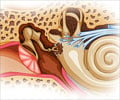An exhaustive genetic study conducted on more than 3000 people has helped solve one of the ancient mysteries associated with earwax. It could eventually explain why some people have dry earwax while some others have a sticky, brown exudate.
The study has further established that people from either a European or African descent tend to have sticky and wet earwax while those with an east-Asian origin have dry wax. The researchers, in an attempt to observe the difference, carried out genetic analysis on the Japanese study participants.Amongst the participants, 64 were found to have dry wax and 54 had wet, sticky earwax. Surprisingly, a slight variation in just one base was found to determine the type of wax produced by a person. Nearly 3 billion pairs of such letters or bases constitute the human genetic code.
Following this interesting finding, the researchers carried out similar tests on more than 3000 people, from diverse ethnic backgrounds. From the analysis, it was found that the genetic variation associated with dry wax was documented in Koreans and northern Han Chinese. Africans and African Americans had a normal version of the gene and therefore had wet earwax.
Low frequency of the genetic variation was also found amongst the French, Hungarians and Solomon Islanders. It is hypothesized that this mutation of the earwax gene could have originated in northeast Asia, spreading to other regions of the world as people migrated.
Earwax keeps the ears moist and traps any insects. In also cleans the ears. People with wet wax have more body odour, as they tend to sweat more. It is therefore reasonable to assume that people with dry earwax are sexually more attractive or have more sex appeal on account of reduced sweat and body odour.
The result of this interesting study represents the first example of single nucleotide polymorphism (SNP), being linked to a visible physical trait. The article appears in the latest issue of the journal Nature Genetics.
Advertisement











